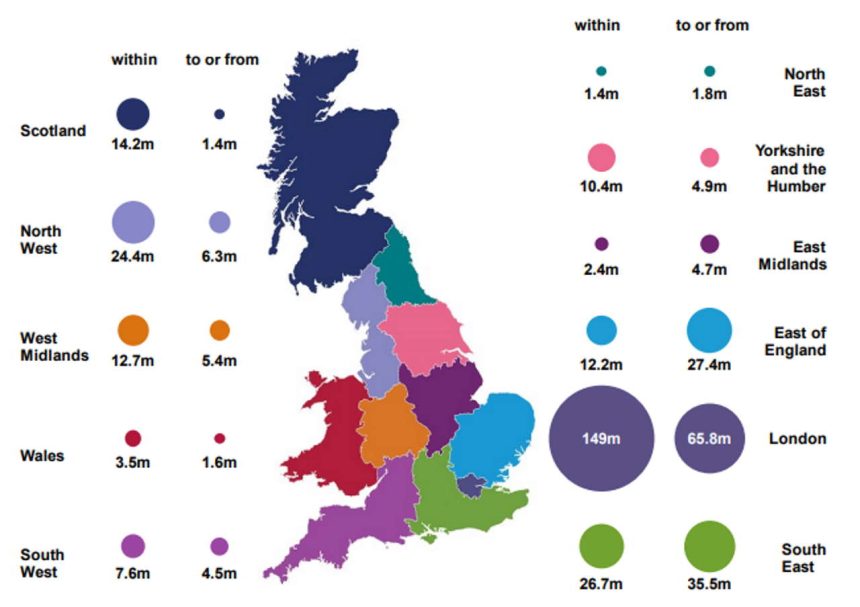The Office of Rail and Road (ORR) has published its annual statistics of passenger journey data for each Region of Great Britain, including journeys between Regions, within Regions, and between England, Scotland, and Wales in the period 2020-2021.
Analysis of the data shows that although the coronavirus (COVID-19) pandemic affected passenger rail usage during the financial year, the impact varied regionally. 264 million journeys were made within regions in 2020-21, which is equivalent to 25.9% of the 1,022 million journeys made in 2019-20.
London, with 149 million, had the most journeys within a region. The East of England with 35.8% recorded the highest percentage of journeys made compared with 2019-20, whilst Scotland with 15.6% recorded the lowest percentage of journeys made a year earlier.
There were 79.6 million journeys made between regions in 2020-21 which is equivalent to 16.5% of the 482 million journeys in 2019-20. London had the most journeys to or from other regions, while the East Midlands with 18.3% recorded the highest percentage of journeys made compared with 2019-20.
A total of 1.6 million journeys were made between England and Wales in 2020-21, whilst a total of 1.4 million journeys were made between England and Scotland.
The number of journeys made between Scotland and Wales is small relative to those between other countries, but there were still 5,890 journeys made between Scotland and Wales in 2020-21.
The full report can be found on ORR's Data Portal here.
The report breaks down regional passenger journeys between England, Scotland, and Wales, and between regions, and within the following regions:
- East Midlands
- East of England
- London
- North East
- North West
- Scotland
- South East
- South West
- Wales
- West Midlands
- Yorkshire and the Humber
The Office of Rail and Road is the independent economic and safety regulator for Britain's railways, and monitors the performance and efficiency of England's Strategic Road Network. The ORR's passenger-facing work derives from the licences it issues to train and station operators, including Network Rail for its managed stations, and from its powers and responsibilities under consumer and competition law.
